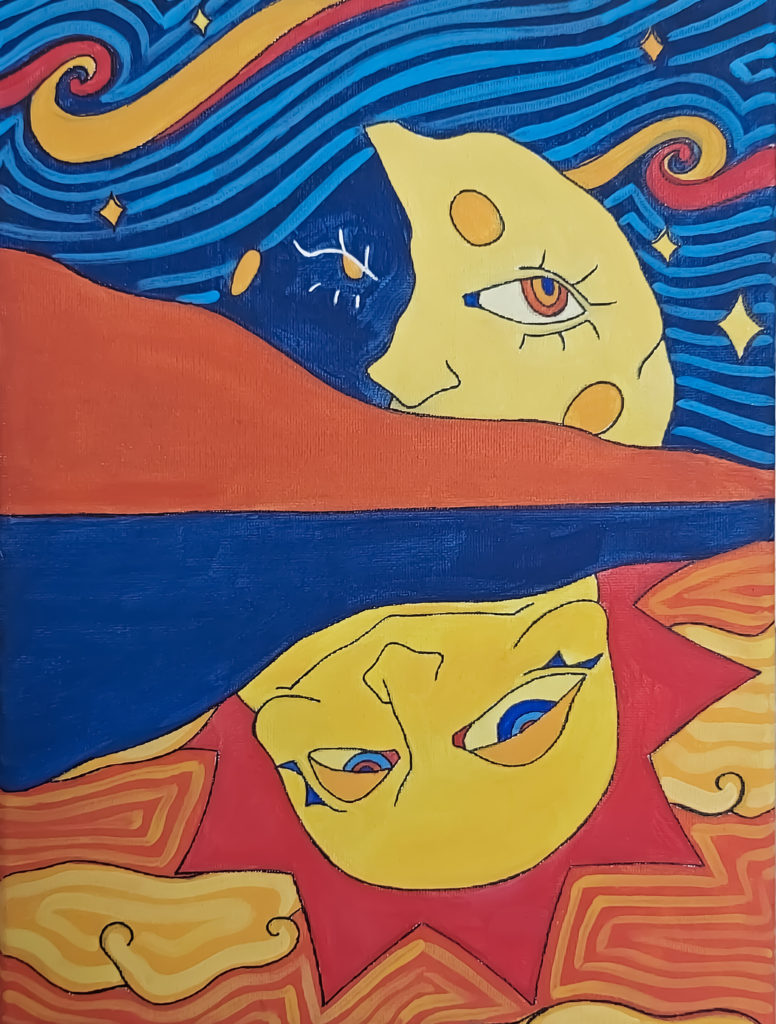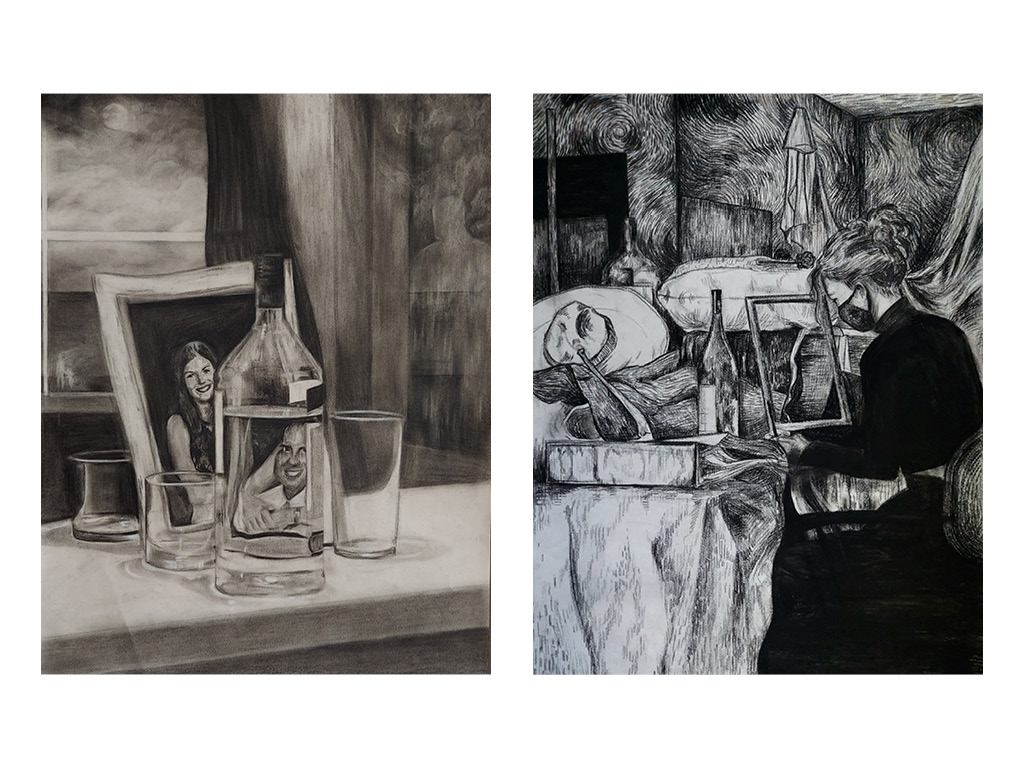Sophomore pre-graphic art student Lillia Rush was accepted into the graphic arts program with a concentration in illustration.
Artwork courtesy of Lillia Rush
By Alisha Durosier
The months of February and March are an important period for sophomore pre-graphic art students. It marks the season of portfolio review, submission and consideration for entry into the latter half of the 2 + 2 graphic arts program offered at The University of South Florida St. Petersburg. Meaning, students go through the first two years of the program as pre-graphic art students and upon acceptance, the last two as official graphic art students.
The deadline, March 19, kickstarted this year’s selection process and pre-graphic art students began receiving their admission decisions the following weekend.
“It’s nerve-wracking because it’s so selective,” said sophomore Lillia Rush, a pre-graphic art student who was accepted into the program last weekend with a concentration in illustration. “Around 20 students out of your whole major get to make it in which is like a third.”
The portfolio submission process is crafted to determine if pre-graphic art students could manage the upper-level courses of the graphic arts program.
Through the 10 pieces of work incorporated in students’ portfolios, whether personal or from previous coursework, a panel of five faculty members will look for the demonstration of conceptual thinking and technical skill.
“How’s the craft of the work? How’s their technique, their work ethic, how are they thinking through the work and also executing it and taking feedback and considering it into that work?” Associate professor of instruction of graphic design and the graphic arts program coordinator, David Watts said. “We’re not trying to keep people out, we’re just trying to understand where the student is and if they’re ready to succeed in the program.”
“I was definitely anxious … but I wouldn’t try to focus on the fear, because I wanted to believe in myself,” Rush said. “I just tried to find how I wanted to represent myself as an artist,” Rush said, specifically in the month leading up to portfolio submissions.

Junior graphic art student with a concentration in illustration, Victoria Lim also reflects on the month leading up to portfolio submission.
“It’s very time-consuming. It requires a lot of thought, a lot of anxiety, but it’s not really until a month before, everybody starts kicking into overdrive and composing all their things, start thinking about the concept and meeting with our professors,” Lim said. “That was a time when all the students got really close together. We all work together. That’s when we’re constantly begging for peer reviews or comments or concerns and sharing ideas,” she said.
“But once that is over, then actually being able to break out and find out your own sense of style. Now that you have that knowledge in … being able to do that with our assignments, our professors being open and even encouraging it, it’s great,” Gabriel Chancey, a graphic arts student with a concentration in graphic design, said.
Before preparing to submit their portfolios and choosing a concentration, students have the first two years of the program, which are a mix of general education courses and prerequisites, to experiment, explore and expose themselves to as much work as possible. According to Watts, this is the best course of action a pre-graphic art student could take.
“Into the latter years, I would say it’s less fun in that aspect, in the sense of experimenting and focusing on your style and concept, which is still a common theme as you go later into the years. But now I feel like it’s more serious and you produce a lot more work,” Lim said.
Only a small number of students are accepted into the program every year, and once students make it into the program, they are required to apply their skills into the design world.
“Your future starts as soon as you get accepted into the program, like you need to know where you’re gonna go after this,” senior graphic Arts student with a concentration in graphic design, Nilah Neely said.

The small size of each class also fosters a sense of intimacy among the students in the graphic Arts program.
“You’re stuffed in a really hot room with 20 other students and you guys have to figure out creative ideas and you see everybody else’s approach to things,” Lim said. “So, it gets very intimate in a nice way. Even on a friend or a mental health level, sometimes it surpasses just an academic, peer-to-peer professionalism.”
Those who are not accepted, however, either select a different major to study or wait another year to apply to the program once again.
Junior graphic arts student with a concentration in graphic design, Nicole Mattick was not accepted to join the program the first time she applied.
“I did what is called an independent study with my professor. We did one on ones every week and she basically took what I thought about art and put it on its head,” Mattick said. “She pushed me outside of my comfort, which I needed because I make my best work outside my comfort zone.”
Like Mattick, many of the current graphic arts students recognize the ways in which they’ve changed on the other side of the portfolio submission process.
“Your vision of graphic design is not what you think it is until you get into this program, because thought graphic design was just, you know, making a logo and branding. I was gravely mistaken,” Neely said. “I’m a little bit more self-critical or at least critical towards my work and what I want to see in terms of my end goal.”
An artist’s acceptance into the program is just the beginning.
“There’s just constant learning and you’re always gonna change and grow as an artist,” Lim said.
In the final year of their program, graduating graphic arts students will partake in a senior thesis show, showcasing their work. This year’s show will take place on April 14 at 5 p.m. in the gallery of Harbor Hall.



